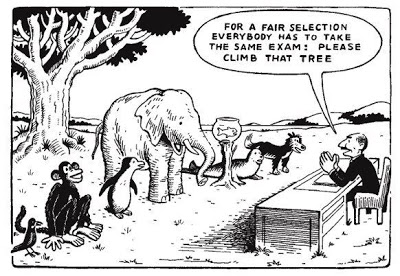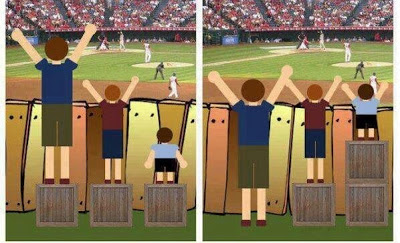Fairness vs Equality an educators conundrum. Should all students be treated fairly or equally?
Every teacher, in every classroom, regardless of context, wrestles with this conundrum. The much hailed consistency would appear to endear itself with equality and as a result where does that leave fairness? After all, students not contribute equally, students do not contribute ‘as much of what they have to give / themselves’ equally, (not all students have the same to give) and lastly, the relationship of ‘teacher and student’ or ‘subject and student’ is rarely even distributed within a class.
I find it difficult to treat all students alike. I have more productive relationships with some students over others. I can safely and affirmatively state ‘your subject matters.’ I got on famously with some students in our PE lessons, that I did not get on with in our English class and vice-versa (and most certainly lent on those gains when teaching the other). Of course, whether or not the students like our subject, matters. Setting aside the teacher-student-subject relationship then, and it can be a significant proportion of the conundrum, fair or equal?
A teacher wouldn’t try to treat all students equally by taking away a student’s glasses. It has to be fair and being fair require conscious effort / knowledge of the behaviour policies set out in your school.
How to handle the cries of injustice – “that’s not fair.”
This idea is also brazenly stolen from Rick Wormeli. It would work well as class explanation, possibly better as a year assembly?
Step 1 – Place two rewards high up on a classroom wall, so high up, only the tallest student (probably a September birthday, early developer) at full stretch and jumping can reach them.
Step 2 – Ask for volunteers: “Anyone who can reach it, can have it, no strings attached.” When the hands go up, choose the tallest student first.
Step 3 – Ask for another volunteer. Ignore the hands and select the shortest person in the room. After their futile attempts, they often go for a chair or table.
“You may not use a chair; that would be unfair. So and so did it under her own steam. You must do the same.”
The class will do doubt erupts in complaint:
“That’s not fair! He can’t help he’s small,” they’ll chime in. Feing thoughtfulness as you pondering their argument, then say, “Okay, give me your best reasons for allowing him to use a chair or any form of assistance in reaching the reward when so and so had no help. (With emphasis) How can that be fair?”
After listening to them argue their case, relent, which is what you were going to do anyway, and let the student use the chair and grab the reward.
After this demonstration, you should rarely have to explain why you do things differently with different students in order to get everyone over the line; that includes changing deadlines, differentiated homework tasks, levels of support, varying assessments and more. They get it. Fair isn’t always equal, and thank goodness our teacher is fair.
I plan to use this technique with students who repel extra reading sessions or handing writing sessions or redraft a B grade piece of work to an A as not fair.
[qr_code_display]



